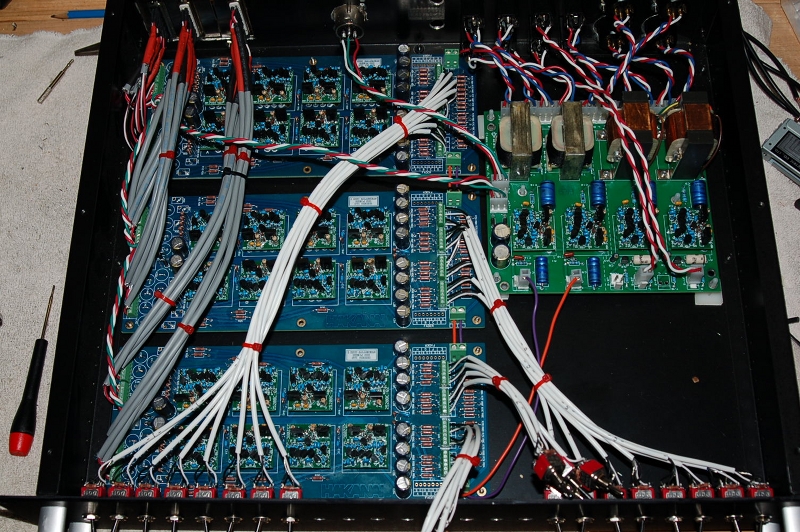hakanai said:
I have not had this problem myself. what is the exact implementation you have built? Pans? Faders? DC blocking caps?
I was speaking with a friend last night and it seems like the DC blocking caps should be a recommended addition. He was saying large groups of DC coupled channels could start to interact with each other in bad ways. I don't know that this is what you are experiencing but if you didn't use the caps it could be a relatively easy place to start.
don
Ahhh -- Right, you don't know what's in my box... It's three of your boards, so 24 channels. I opted for no DC block caps, so those are jumpered over. I also opted to not worry about the CMRR trim pots - those are jumpered too. On the back end, I went with LCR switches using your suggested design, and those work really well. No faders - I do all of my levels and actual pan in the computer.
The problem is weird - everything seems fine at power up, but one out of 24 channels slowly tapers off to no level. I'm going to start by inspecting the signal path, looking for anything weird, but I'm concerned because the ST circuit is so simple -- I figured the problem would likely be in the opamp, since they're so much more complex... But a quick swap from a working channel proved that to be not the case. Also, when the channel "acts up", the pop from the pan switch is much louder than when it's working.
It's gonna be fun pulling all the cabling out with the board... At least it's the board on the very end, and the way I put it together will allow me to pull the db25, and all 8 pan pots without disconnecting anything.
I will say that though that my cursory listening test on one song proved that this thing sounds worlds better than the Soundcraft board I've been using in this capacity. Far more clarity and the guitars finally sound like they're where they should be in my mixes!
I'll report back once I see if there's just something simple going on. Thanks for the response.


































